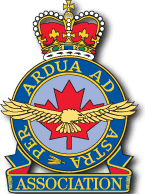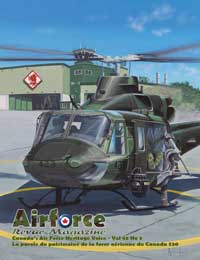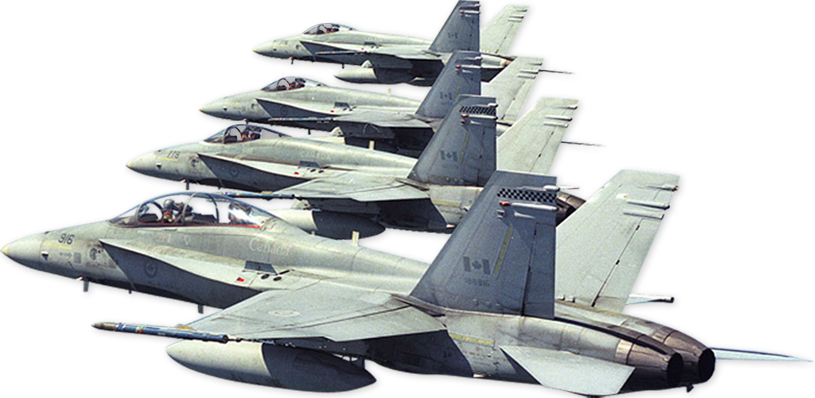Unveiling of the York Minster Memorial – 1 November 1955
On All Saints’ Day, the 1st November 1955, and in the presence of a notable gathering of the next-of-kin of fallen airmen, and representatives of Commonwealth governments and Her Majesty’s air forces, H.R.H. the Duke of Edinburgh unveiled the beautiful shrine erected in a ‘Chantry of the North Transept’ of York Minster as a memorial to the fallen of Nos. 4( Bomber), 6 (RCAF Bomber) and 7 (Operational Training) Groups of Bomber Command, Nos. 16 and 18 Groups of Coastal Command, and units of Fighter Command – including Nos. 607, 608, 609 and 616 Auxiliary Squadrons – Royal Air Force.
Canada, the Royal Canadian Air Force, and the RCAF Association were represented by Hon. Norman Robertson, High Commissioner for Canada to the United Kingdom; Air Commodore A.D. Ross, GC, CBE, CD., Canadian Joint Staff (Air) London; and Air Vice Marshal K.M. Guthrie, CB, CBE, CD., National President, RCAF Association.
The Canadian representation was made particularly noteworthy by the attendance, by special invitation, of Air Vice Marshal G.E. Brookes, CB, CBE, CD, Grand President RCAF Association, and Air Vice Marshal C.M. McEwen, CB, MC, DFC, CD, LLD, a prominent member of the Association. The first named was the first A.O.C. No. 6 (RCAF-Bomber) Group and the latter was the second and last A.O.C. of this famous all-Canadian organization of the war-time RCAF.
Between 4,000 and 5,000 persons attended and took part in this memorable service of thanksgiving held in the venerable York Minster; a church familiar and, indeed, a symbol to airmen of many lands – Britain, Canada, Australia, New Zealand, France, Norway, Poland, Czechoslovakia, and the Low Countries – all gathered in Great Britain to fight for freedom and democracy. Many of these same airmen are now citizens of Canada and members of our Association.
At the conclusion of the Order of Service, the congregation slowly filed by the Memorial. An appropriate wreath of remembrance was laid at it by the National President.
Outside the Minster, a march-past of RAF and RCAF personnel, supported by members of the RAF Association and the British Legion took place, with H.R.H. The Duke of Edinburgh taking the salute. A reception, by invitation, was held in the famous York Assembly Rooms at which Canadian representatives were presented to H.R.H. the Duke of Edinburgh.
The Memorial takes the form of an astronomical clock, under which stands the Lectern with the Book of Honour upon it. A clock must have a case enclosing it and a monument a structure. The Minister’s own architect – Professor A.E. Richardson – has produced a memorial which does not merely enclose or frame the dials of the clock and support the Lectern and the Book of Honour. The monumental framework, fashioned of walnut exquisitely proportioned to the Chantry in which it stands, rises to a cenotaph surrounded by a frieze of winged figures cast in bronze. These figures represent Courage, Skill, Sacrifice and Victory and are symbolic of angels bearing the fallen airmen upward to the flaming gold Cross and Crown of Christ, which surmounts the Memorial structure.
Essentially, the Book of Honour is the heart of the York Minster Memorial. The names of the fallen are written in one long list, in alphabetical order, and are grouped in blocks under the initial letter of surnames. They are Not grouped by commands, formations, or units. This makes for ease of reference. The names of 3,537 members of the RCAF are written into the Book of Honour. In the Book of Honour, however, there are vacant spaces such as occur at the end of a block of names grouped under their key alphabetical letter. These spaces have been filled in with exact drawing reproductions of the different types of aircraft actually flown by the airmen named in each block of names proceeding the drawings. Famous types in their day, these aircraft are already all but forgotten as regards design and appearance, except by those living who have flown them. The Book of Honour, therefore, gains in historical importance by accurately listing and depicting these aircraft. Here is the list of those shown: ANSON, BEAUFORT, WHITLEY, WELLINGTON, STIRLING, WARWICK, SUNDERLAND, HURRICANE, BATTLE, TYPHOOON, MOSQUITO, SPITFIRE, WALRUS, BLENHEIM, BEAUFIGHTER, LANCASTER, TEMPEST, MASTER, METEOR, HALIFAX, TIGER MOTH, LYSANDER, MUSTANG, and, CATALINA.
Dying and Behold we Live
Although it is said that “time dims the memory,” there are some experiences which cannot, indeed, should not be forgotten. Amongst the recollections of the Second World War, there are abiding memories of days when in the gathering dusk the air was filled with the roar of our bombers as they streamed over the ancient city of York. The grey outline of the venerable Minster may well have been the last glimpse of an English scene to thousands of lads before darkness blotted out the shadowy landscape.
York Minster became indeed a symbol to airmen of many lands – Britain, Canada, Australia, New Zealand, France, Norway, Poland, Czechoslovakia, and the Low Countries-all gathered on our soil to fight the common foe. There could be no more fitting way of perpetuating the memory of those intrepid men who gave their lives, than by setting apart a place in the undying Minster to remind generations to come of the price paid in our day for freedom and democracy.
The scene of their operations was the air, and I ventured to propose that the Memorial should have special reference to that element. The Committee felt that an Astronomical Clock, showing the phases of the moon and the solstice, embodying the picturesque signs of the Zodiac, would be specially significant for a Memorial to airmen. On the reverse side of the Clock will be an astronomical map of the night skies showing the constellations of the Northern Hemisphere under which they flew to their objectives, and it may prove possible to include representations of-the various aircraft employed·. Astronomical. Clocks are traditional in .Cathedrals and Clock Towers. There are many on the Continent, and in this country those at Wells, Wimborne Minster and Hampton Court Palace are famous..
The Shrine has been designed by Professor A.E. Richardson, RA, the Minster architect, and an artist’s impression is reproduced in this brochure. Under the Clock will stand a Lectern on which will lie the Book of Remembrance containing the names of some 20,000 airmen who lost their lives whilst serving in the units and formations which the Memorial commemorates. Arrangements will be made for one page of the Book to be turned each week. Such in brief outline is the project to set in York Minster a fitting memorial to those thousands of airmen who Fflew across the ” shire of broad acres ” to assault the enemy, and who failed to return from their missions. The site selected adjoins on one side the Women’s Memorial of the First World War, and on the other the Five Sisters’ Window, and this corner will be known as the British Legion and Royal Air Forces Association Memorial Chantry. It will not need screens to enclose it-the architecture of the Minster provides that. The empty space of the North Transept facing the Book and Clock will serve as a most noble chapel for prayer. There the Book will abide perpetually and the Clock register the seasons of the skies through which our airmen ,flew. Senior officers who were connected with the unit concerned have given warm approval to the scheme; and, a committee consisting of British Legion and Royal Air Forces Association representatives has worked enthusiastically for its furtherance. From the Minster side I may add that the Chapter’s consent has been unanimous and proud. E. Milner-White, D.S.O., President “The York Minster Thanksgiving Memorial.”
The Royal Canadian Air Force Association has raised approximately $9,000.00 toward the cost of this Memorial, which will be unveiled by His Royal Highness the Duke of Edinburgh on Tuesday, November 1st, 1955. This hallowed spot in Britain’s centuries old York Minster which throughout the war years remained a landmark for aircrews going out and returning from their missions, is a shrine set apart to perpetuate the memory of Commonwealth and Allied airmen who lost their ,lives in the Second World War while operating from bases in North-East England.
Among the thousands commemorated in this Memorial, are the names of 5,722 members of the Royal Canadian Air Force.
| Rank | Surname | Christian Names | Unit |
|
Aalborg Abrams Acer Achtymichuk Acker Ackland Acorn Acton Adam Adam Adams |
Karl Inge Stanley William John Frederic Alex James Gordon William Eric George Warburton George Nelson Joseph Paul Hector Raymond Francis Eric Victor |
||
| Adams | |||
| Adams | |||
| Adams | |||
| Addison | |||
| Adilman | |||
| Adlard | |||
| Agar | |||
| Agassiz |








